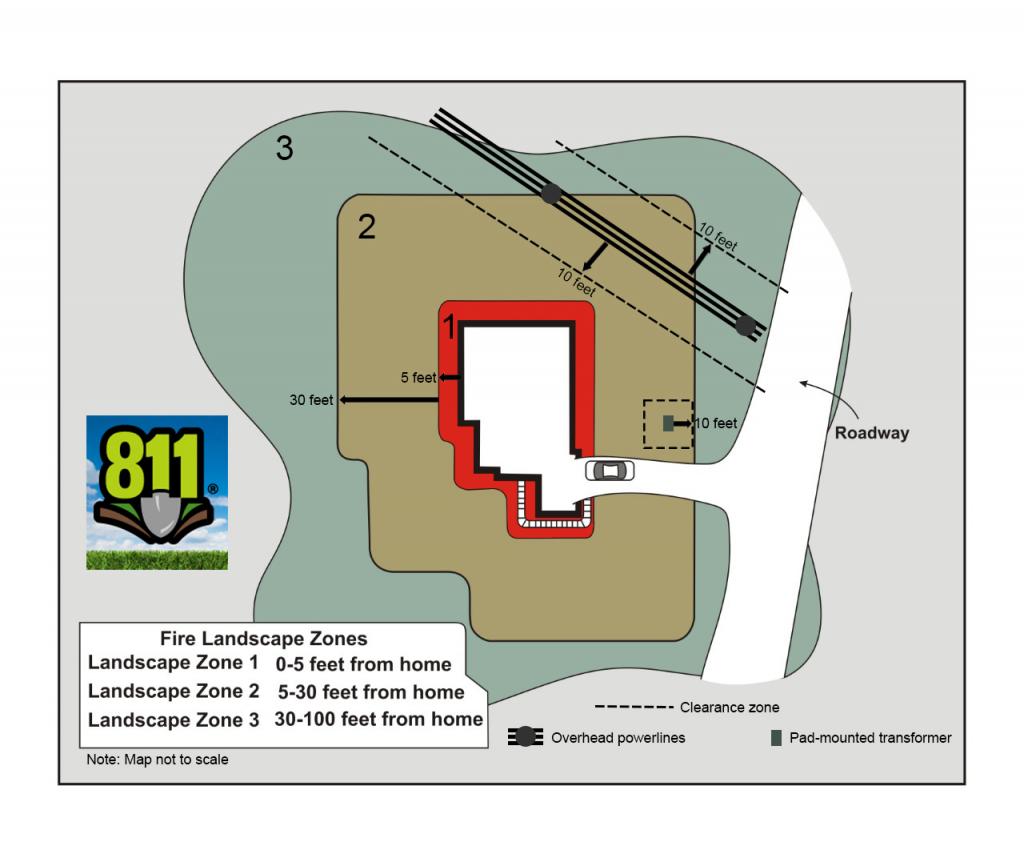By Kim Johnson & Sheila Corson
Do you want your home to be safer and more efficient? This is part three of a four-part series from Okanogan County PUD about WISE (water, infrastructure, safety, efficiency) landscaping around your home. In this third part, we will explore ways to conserve water while still being safe and efficient.
When we talk about home ignition zones, a basic principle is that the closer you get to your home, the more critical it is to avoid combustible items. Part of wildfire readiness is keeping plants well-watered, and providing natural fire breaks like an irrigated lawn. But you might not want a huge yard that requires a lot of water. Instead, you might want to create a xeriscape, which utilizes plants that require little or no water.
Many Okanogan County native plants are good for xeriscaping, since they are both drought-resistant and fire-resistant – like lupine and balsamroot. Group plants based on similar water needs to avoid over- or under-watering. Consider some hardscaping as well, such as pavers or dry rock beds. If you plant a lawn, consider reducing the size and plant grass types that are conducive to your site and environment.
A greener lawn means better fire resistance, but you can minimize water usage with a timer system for optimal times – earlier morning or evening when temps are cooler. Water deeply, but infrequently, which helps plants develop deeper roots. Soil probes help to determine if you are over- or underwatering.
Don’t water on windy days when water will evaporate quickly. Also, arrange your sprinklers to water low to the ground (avoiding evaporation again) and to avoid spraying on pavement or other areas where water will be wasted. Make sure you water where plants need it – trees for example need water out to the edge of their canopy to reach the full length of the root system.
Regularly inspect your irrigation system for leaks. A leak as small as the tip of a pen in your automatic irrigation system can waste as much as 6,300 gallons of water per month!
Healthy soil is important for water retention. Consider a three-bin compost system, and use it in your garden. The organic matter in the compost helps retain moisture. You could also lay non-combustible mulch around your plants to retain moisture as well.
There are several other ways to reduce water waste: Winterize outdoor spigots when temps get below freezing to prevent leaks. Aerate your lawn, which allows for better absorption of water and nutrients. Install porous walkways to prevent water runoff. Wash your vehicle or your pet in an area of the lawn that needs the water. And maintain your plants by proper pruning to save on water.
So now that we are getting more wildfire-ready, infrastructure aware, energy efficient, and conserving water, how do we keep it that way? We’ll share more about maintenance in the next and final part of our series on WISE landscaping. Check out our videos on YouTube, or on our Facebook page.
